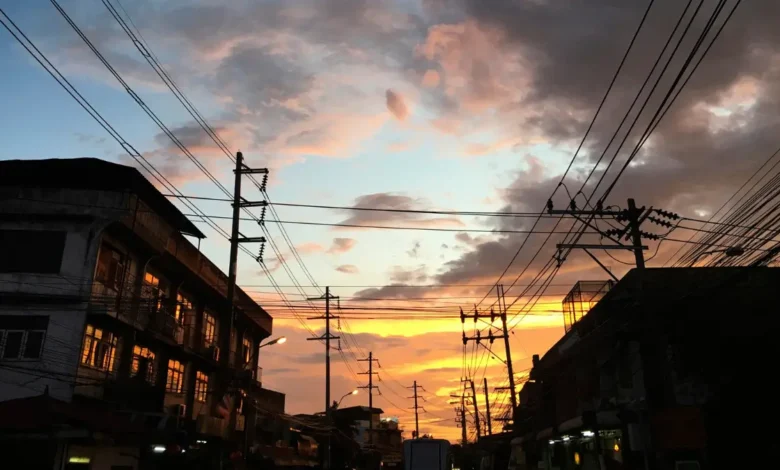South Africa Faces Escalating Power Crisis: Eskom Implements Stage 8 Loadshedding

Eskom Implements Stage 8 Loadshedding
South Africa is grappling with an escalating energy crisis as Eskom, the state-owned power utility, has been forced to implement Stage 8 loadshedding in recent weeks, marking the latest chapter in the country’s ongoing power supply instability. The implementation of Stage 8 loadshedding follows a series of setbacks for Eskom, which recently lost five critical generation units, leading to severe disruptions during peak energy demand hours. This crisis has raised significant concerns about the reliability of Eskom’s power supply and the long-term impact on South Africa’s economy.
ALSO READ: Eskom Suspends Load Shedding, But Experts Warn Relief May Be Temporary Due to Winter Demand
Eskom’s Power Struggles: A Result of Generation Unit Losses
The immediate cause of the latest load shedding was the unexpected loss of five generation units on Wednesday night, as confirmed by energy experts. This was a major blow to the national grid, with the loss of such a large number of units severely hampering Eskom’s ability to meet demand. Prof. Vally Padayachee, an energy expert and former Eskom executive, noted that the power utility had made progress in stabilizing its generation system in recent months. However, this setback revealed vulnerabilities in Eskom’s infrastructure, particularly with two of the lost units linked to cross-border issues stemming from the Cahora Bassa hydro-dam in Mozambique.
Eskom had previously made efforts to recover from prior load shedding episodes, but the loss of five generation units during peak demand highlighted the fragile nature of the current energy system. According to Padayachee, the loss of these units necessitated the implementation of Stage 2 load shedding, which lasted for 10-and-a-half hours, severely affecting households and businesses across the country. While some of the units were restored rapidly, four of the five were brought back online by Thursday morning, adding a total of 3,000 MW to the grid.
ALSO READ: Today’s Weather Forecast – 24 March 2025
The Risks of South Africa’s Energy System
Despite these recoveries, experts continue to warn of the risks associated with Eskom’s energy system. The utility has acknowledged that its power generation remains frail, with risks of further disruptions. According to Padayachee, the country’s energy availability factor (EAF), which measures the proportion of capacity that is available for use, remains low. Eskom has set a target of reaching an EAF of 70% to 75%, along with a reserve margin of 10% to 15%. Until these targets are met, Eskom will continue to struggle with sporadic load shedding.
The upcoming winter season exacerbates these challenges, as electricity demand increases significantly due to colder temperatures. In such conditions, the system becomes even more vulnerable, leading to concerns about Eskom’s ability to provide reliable power. While the utility continues to prioritize planned maintenance, there are still inherent risks, especially with the aging infrastructure of power plants.
ALSO READ: Eskom Gets Boost as Kusile Power Station’s Final Unit Adds 800MW to the National Grid
Eskom’s Efforts and Broader Energy Challenges
Ruse Moleshe, the managing director of RUBK, an energy consulting firm, echoed these concerns, emphasizing the role of auxiliary equipment, such as transformers, in Eskom’s generation woes. He noted that a significant amount of capacity had been taken offline for maintenance during the summer months to prepare for winter demand. However, maintenance delays and equipment failures have compounded the problem, leaving the system vulnerable when demand spikes.
Moleshe also pointed out that South Africa’s broader energy issues are not limited to Eskom. The country’s reliance on regional power imports has been hindered by transmission bottlenecks and the energy challenges faced by neighboring countries. While President Cyril Ramaphosa’s Energy Action Plan aims to address these issues by tapping into private and regional power sources, the lack of sufficient infrastructure and coordination has made it difficult to fully implement these measures.
Unlike countries such as the UK, which benefit from interconnected power grids with neighboring nations, South Africa is not able to rely on regional support in times of crisis. This highlights the urgent need for investment in additional capacity, such as gas and renewable energy projects, to help stabilize the national grid.
The Economic Toll of Load Shedding
The economic consequences of these power disruptions are becoming increasingly evident. Load shedding has already cost South Africa billions in lost productivity and is further straining an economy already under pressure. Businesses, particularly those that rely on consistent power, are being hit hard. The disruption is also affecting household budgets, as people struggle to adapt to erratic electricity supply. Furthermore, the impact on education, healthcare, and other essential services cannot be overlooked, with many institutions unable to operate at full capacity.
While Eskom is taking steps to address the immediate crisis, the long-term solution lies in diversifying South Africa’s energy mix and improving infrastructure to ensure greater resilience against future power shortages. The current crisis underscores the urgent need for a comprehensive, multi-faceted approach to energy generation, with both public and private sector involvement.
South Africa’s energy crisis is far from over. Eskom’s ability to recover from these challenges will require significant investment, improved infrastructure, and a commitment to addressing both short-term and long-term energy needs. As the winter months approach, the situation remains precarious, and the risk of further power outages looms large. Without urgent action, South Africa could face even more severe economic and social consequences as the energy crisis deepens.
Eskom’s Stage 8 loadshedding is just the latest indicator of the severe challenges facing South Africa’s energy sector. The country must take bold steps to diversify its energy sources and modernize its infrastructure to avoid further power disruptions and mitigate the economic toll of unreliable electricity supply.



